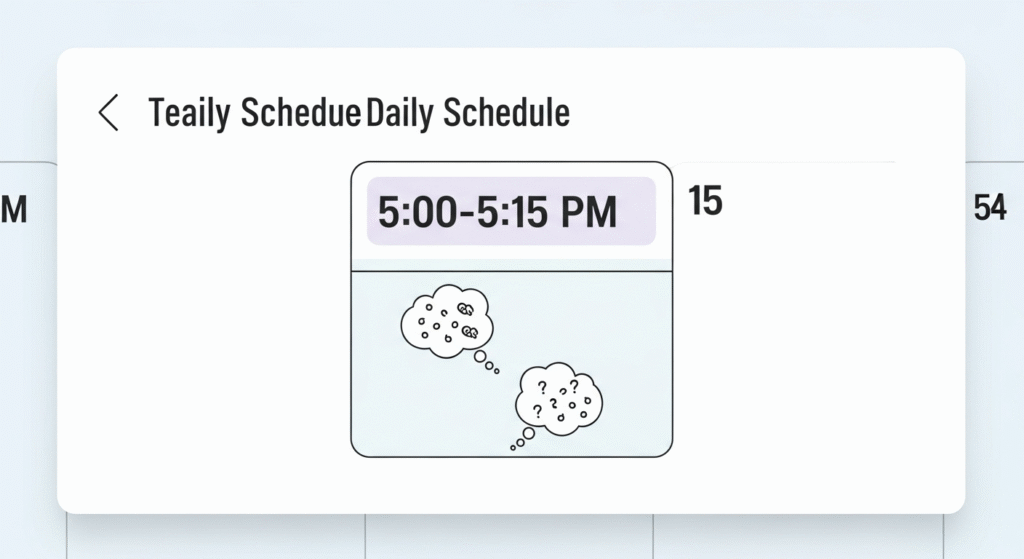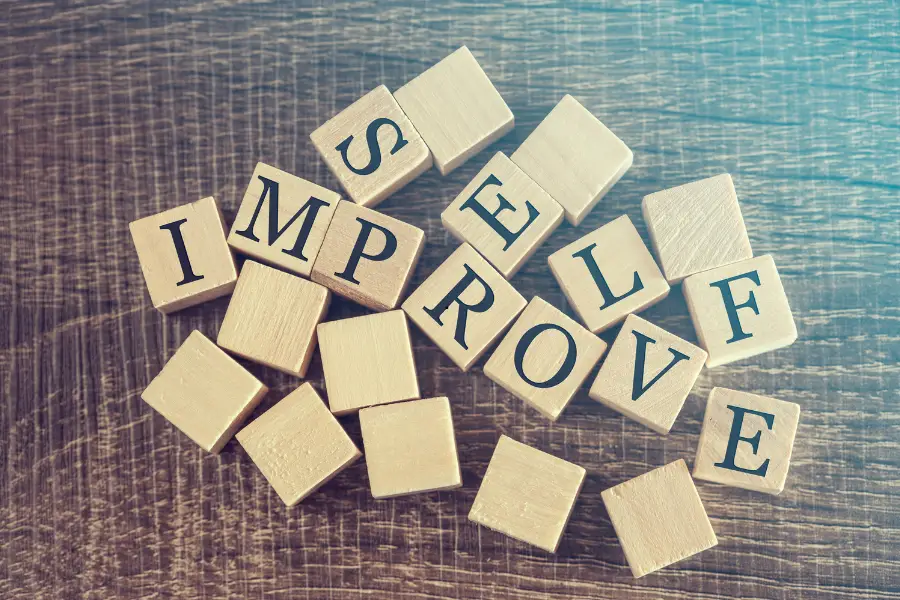It’s 2:47 AM, and you’re replaying that conversation from earlier, wondering if you said the wrong thing. Your mind won’t stop spinning, analyzing every detail until you’re exhausted but still wide awake.
Overthinking is your brain’s misguided attempt to solve problems by analyzing them endlessly. While it feels productive, it actually creates more anxiety and mental fog. The good news? You can learn to break these thought loops quickly and effectively.
These 14 ways to stop overthinking aren’t time-consuming techniques that require major life changes. They’re simple, science-backed methods you can use immediately—whether you’re lying in bed with racing thoughts, stressed before a meeting, or caught in a worry spiral during your commute.
You don’t need to master all 14 techniques at once. Pick 2-3 that resonate with you and practice them consistently. Small, regular efforts create lasting change, usually within 4-8 weeks.
Let’s get your mind back on your side.
14 Quick Techniques to Stop Overthinking
1. Recognize Your Thought Loops
The technique: Set phone reminders 3 times daily asking: “What am I thinking about right now?” If you’ve been mentally rehashing the same situation for 10+ minutes without taking action, you’re overthinking.
Why it works: Self-awareness interrupts automatic thought patterns and creates space for conscious choice.
Quick tip: Label your thoughts: “I’m having that worried thought about tomorrow’s meeting again.” This creates healthy distance between you and the thought.
2. Focus on What You Can Control
The technique: When overthinking strikes, ask: “Is this something I can actually influence?” Redirect mental energy only to controllable factors.
Make it practical: Create two columns: “Can Control” and “Cannot Control.” Categorize your worries. Research shows this reduces anxiety significantly by eliminating wasted mental energy.
Quick tip: You can control your actions, effort, and responses. You cannot control others’ opinions, past events, or uncertain futures.
You may also read more about Lucid Dream Meaning: What It Really Tells You About Your Mind.
3. Use the “STOP” Technique
The technique: When caught in mental spirals, say “STOP” (mentally or aloud), take 3 deep breaths, then immediately redirect to a planned activity.
Thought-stopping creates neural interruption, breaking automatic thought flow.
Quick tip: Pair verbal “stop” with physical gesture (clap hands, snap rubber band) for stronger impact.

4. Create a Daily “Worry Window”
The technique: Schedule 10-15 minutes daily for intentional worrying. When concerns arise outside this time, say: “I’ll address this at 5 PM.”
Why it works: Structured worry time reduces overall anxiety by 35% because your brain stops feeling urgently worried all day.
Quick tip: Keep a “worry appointment” notebook. Jot down concerns during the day, then review during scheduled time.

5. Practice 5-4-3-2-1 Grounding
The technique: Name 5 things you see, 4 things you can touch, 3 things you hear, 2 things you smell, 1 thing you taste.
Why it works: Sensory grounding activates your parasympathetic nervous system, naturally calming fight-or-flight responses.
Quick tip: Use this anywhere—waiting in line, before meetings, or in bed with racing thoughts.

6. Break Loops with Movement
The technique: Take a 5-minute walk, do gentle stretches, or even clean something. Focus on physical sensations, not your worries.
Why it works: Movement boosts creative thinking by 60% and interrupts repetitive thought patterns by changing brain chemistry.
Quick tip: Even 30 seconds of shaking your hands and arms can discharge nervous energy effectively.

7. Write and Release
The technique: Set a timer for 10 minutes. Write everything bothering you without editing. When done, tear up or safely burn the paper.
Why it works: Expressive writing reduces psychological distress and moderates the impact of intrusive thoughts while symbolic releasing signals your subconscious to let go.
Quick tip: This is brain-dumping, not problem-solving time. Don’t censor yourself.
8. Set Decision Deadlines
The technique: Give small decisions 24 hours maximum, medium decisions one week, major decisions one month. When deadline arrives, choose the best available option.
Why it works: Limiting decision time increases satisfaction and prevents endless reconsidering.
Quick tip: Aim for “good enough” decisions rather than perfect ones. Most choices can be adjusted later.
9. Limit Information Overload
The technique: Try “digital sunsets” (no new info 2-3 hours before bed), unfollow anxiety-inducing accounts, and designate news-free days weekly.
Why it works: Every piece of information becomes potential overthinking fuel. Reducing social media exposure decreases rumination by 30% within one week.
Quick tip: Choose 2-3 quality information sources instead of endless scrolling.

10. Replace “What If” with “Even If”
The technique: Instead of “What if I fail?” ask “Even if this doesn’t go perfectly, how will I handle it?”
Why it works: This cognitive reframing reduces anxiety by 50% by shifting from catastrophic thinking to coping-focused thinking.
Quick tip: Practice this daily. You’re training your brain to see you as capable, not vulnerable.
Why Walking Every Day Can Improve Your Mental Health.
Unlocking Inner Strength: Inspirational Quotes and Practical Insights for Resilience.
How to Maintain a Strong Healthy Relationship with My Teen.

11. Try Box Breathing
The technique: Inhale for 4 counts, hold for 4, exhale for 4, hold empty for 4. Repeat 4-8 cycles.
Why it works: Controlled breathing activates the vagus nerve, shifting your nervous system from stress mode to calm mode.
Quick tip: If 4 counts feel uncomfortable, try 3 counts. This should feel calming, not stressful.
12. Rebuild Self-Trust
The technique: Start making quick decisions on small matters (lunch choices, what to wear) without extensive analysis. Keep a “good decisions journal.”
Why it works: Every decisive action proves you can handle outcomes, rebuilding confidence in your judgment.
Quick tip: Learn from outcomes, don’t aim for perfection. Self-compassionate reflection improves future decisions more than harsh self-criticism.
13. Talk It Out
The technique: Share your thoughts with a trusted friend or consider speaking with a therapist, especially if overthinking impacts daily life.
Why it works: External perspective breaks you out of mental echo chambers. Cognitive behavioral therapy shows 70-80% success rates for reducing overthinking patterns.
Quick tip: Sometimes you just need someone to listen. Try: “I don’t need solutions—I just need to process out loud.”
Can’t Sleep? This Ancient Ritual Might Be the Bedtime Game-Changer You Need.
Stressed Out? You’re Not Alone! A Guide to Stress Management Techniques for Students.
14. Challenge Negative Assumptions
The technique: When your mind jumps to worst-case scenarios, ask: “Is this thought realistic? What evidence supports or contradicts it? What would I tell a friend in this situation?”
Why it works: Most overthinking is based on assumptions, not facts. Questioning these assumptions reveals more balanced perspectives.
Quick tip: Write down the worry, then list 3 alternative explanations that are equally or more likely.
Your Next Steps
You’re not broken for having an overthinking mind—you’re human. Start with 1-2 techniques that feel most doable right now. Maybe it’s the 5-4-3-2-1 grounding when you feel scattered, or setting up that daily worry window.
Progress beats perfection. Small, consistent efforts create lasting change within 4-8 weeks. Some days will feel clearer than others—that’s completely normal.
If overthinking significantly affects your sleep, relationships, or daily functioning, consider professional support. You deserve help, and seeking it shows strength, not weakness.
The goal isn’t to stop thinking—it’s to start thinking clearly. Take it one technique, one day, one breath at a time.













